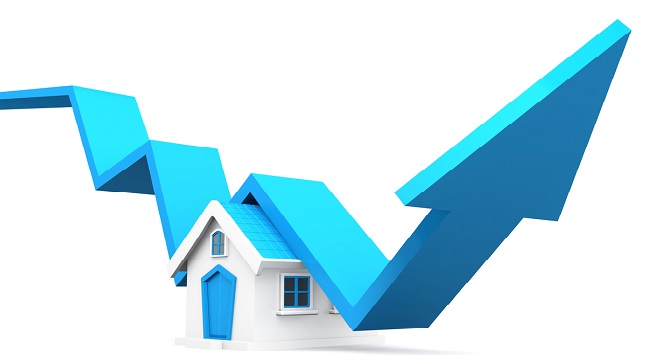April home prices stacked up, 6.4 percent year-over-year, according to the S&P CoreLogic/Case-Shiller Indices.
The S&P CoreLogic Case-Shiller U.S. National Home Price NSA Index’s 10-City Composite, which is an average of 10 metros (Boston, Chicago, Denver, Las Vegas, Los Angeles, Miami, New York, San Diego, San Francisco and Washington, D.C.), rose 6.2 percent year-over-year, a decrease from 6.4 percent in March. The 20-City Composite—which is an average of the 10 metros in the 10-City Composite, plus Atlanta, Charlotte, Cleveland, Dallas, Detroit, Minneapolis, Phoenix, Portland, Seattle and Tampa—rose 6.6 percent year-over-year, also a decrease, from 6.7 percent in March. Month-over-month, both the 10-City Composite and the 20-City Composite rose, 0.1 percent and 0.2 percent, respectively.
“The favorable economy and moderate mortgage rates both support recent gains in housing,” says David M. Blitzer, chairman and managing director of the S&P Dow Jones Indices Index Committee. “One factor pushing prices up is the continued low supply of homes for sale. The months-supply is currently 4.3 months, up from levels below four months earlier in the year, but still low.”
“The ongoing housing shortage has been pushing up home prices well above income growth,” said Lawrence Yun, chief economist of the National Association of REALTORS® (NAR), in a statement. “Prices were generally rising more strongly in the lower price brackets, while the prices of expensive homes are beginning to level off; there are, however, unambiguous signs of home prices softening across the board. The month-to-month price appreciation in April was one of the softest in the past 18 months, with only 0.33 percent gain, which translates into only 4.1 percent annualized growth rate. Rising mortgage rates have also tampered some buying enthusiasm. Given the hit to affordability from the double whammy of rising prices and rising interest rates, it is more critical than ever to bring additional homes to the market to relieve affordability pressures.”
“We expect home prices will continue to rise quickly this summer,” said Ruben Gonzalez, chief economist at Keller Williams, in a statement. “Mortgage rates have leveled off at the moment, and we are continuing to see year-over-year declines in inventory levels. As supply continues to be the primary restrictive factor on sales, we expect demand to continue to drive prices up in the range of 6-8 percent in the next couple of months.”
The complete data for the 20 markets measured by S&P:
Atlanta, Ga.
Month-Over-Month (MoM): 0.8%
Year-Over-Year (YoY): 5.5%
Boston, Mass.
MoM: 1.9%
YoY: 6.9%
Charlotte, N.C.
MoM: 0.8%
YoY: 6%
Chicago, Ill.
MoM: 1.2%
YoY: 3%
Cleveland, Ohio
MoM: 0.9%
YoY: 4.9%
Dallas, Texas
MoM: 0.9%
YoY: 5.7%
Denver, Colo.
MoM: 1.2%
YoY: 8.6%
Detroit, Mich.
MoM: 1.4%
YoY: 7.4%
Las Vegas, Nev.
MoM: 1.6%
YoY: 12.7%
Los Angeles, Calif.
MoM: 0.9%
YoY: 8.3%
Miami, Fla.
MoM: 0.5%
YoY: 5%
Minneapolis, Minn.
MoM: 1.8%
YoY: 6.5%
New York, N.Y.
MoM: -0.6%
YoY: 4%
Phoenix, Ariz.
MoM: 0.8%
YoY: 6.8%
Portland, Ore.
MoM: 1.1%
YoY: 5.9%
San Diego, Calif.
MoM: 1%
YoY: 7.8%
San Francisco, Calif.
MoM: 1%
YoY: 10.9%
Seattle, Wash.
MoM: 2.7%
YoY: 13.1%
Tampa, Fla.
MoM: 0.5%
YoY: 7.2%
Washington, D.C.
MoM: 1.1%
YoY: 3.2%
For the latest real estate news and trends, bookmark RISMedia.com.












